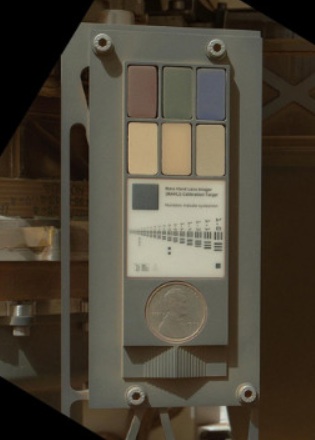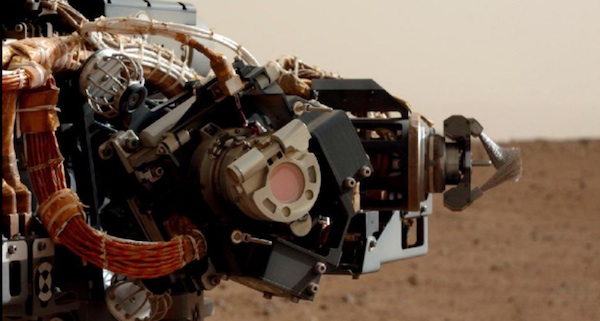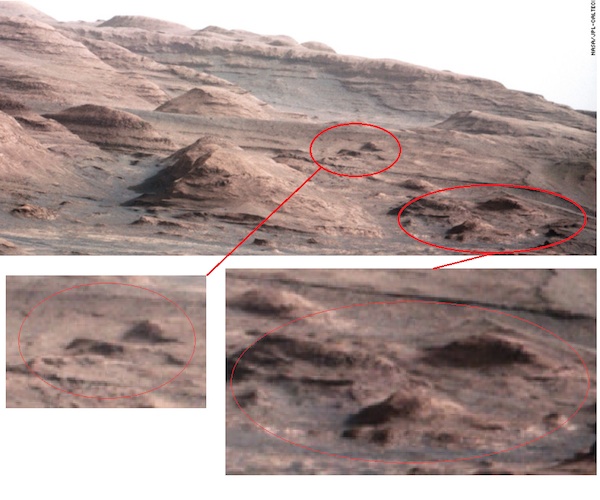Mars is a interesting planet,
made even more so by those who play games with image content and colors
of the sky. In countless older color photos from previous Mars landers
and rovers, we always saw red everywhere. Red sky, dirt and rocks. Apparently
NASA has been quietly listening to annoying people like myself who have
constantly pointed out that these red colors did not match those of their
reference charts, and decided to stop tinkering with colors. But strong
evidence of image editing is still visible, to remove objects and structures
we're not "ready" to see yet.
Incredibly, all these images came from CNN's website on 10/10/13.
One NASA administrator stated on television several years ago, "It's
very hard to get the colors right on Mars." What a bold lie that
was. Perhaps he was really implying it's hard to make Mars look like the
red planet everyone expects to see, which it is not.
Every Mars surface mission has a color reference chart with red, green
and blue color chips. These are used by cameras on landers and rovers
for calibration. Spirit and Opportunity rovers have sundials. Each sundial
has four color reference chips.

Curiosity rover does not have a sundial, but has a similar panel:
Fig. 1 - Mars color reference chart Sept 9 2012. A bit dusty but still
visible are the primary colors red, green and blue. Yes, that is a real
penny sent to Mars, date is 1909

Fig. 2 - Mars Sept 5 2012
- Image taken four days before color reference chart photo (Fig. 1) was
taken. No red sky here.

Fig. 3 - Mars August 27 2012 - No red sky here either.
NASA does plans everything they for a reason. It was former Nazi scientist
Werner VonBraun laid the foundation for their methodology which out-lived
him to this day. This apparently featureless hillside is not featureless
after all.
1. Lower left insert in Fig. 3 highlights a lighter colored, rectangular
area in the original with a darker similar shaped area inside it. This
is abnormal in nature. Why is it there?
2. Lower right 250% enlargement in Fig. 3 reveals apparent image tinkering,
probably to hide something revealing we are not supposed to see. Pixels
and blocks in the original photo do not line up properly. Pixel blocks
and stripe lines are often a sign of image editing. Some may dismiss this
as a artifact caused by the 250% enlargement. It is not; these pixel block
problems remain visible in the original, untouched image. Outside and
above the oval circle, these pixel block problems remain visible.
3. Contrast of the rocks is darker for this area (lower right corner in
Fig. 3) when compared to the remainder of the photo. Perhaps this area
of the image is a pasted composite or extract from a similar Mars image.
Like all NASA sanitized images, we'll probably never know what NASA is
hiding from the world - in plain sight. This is one of countless images
that has been tampered with; the majority of the other images are black
and white.
Ted Twietmeyer
|
![]()